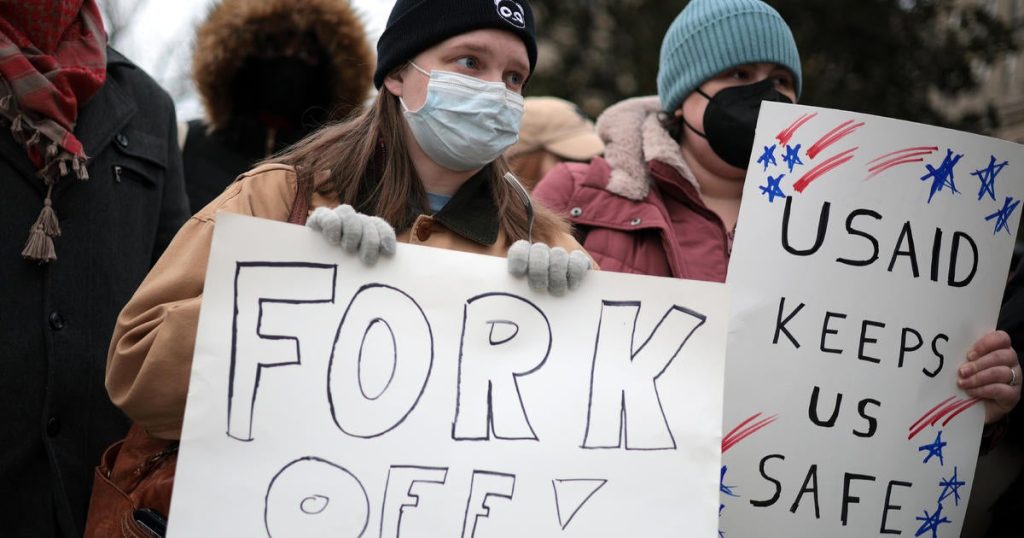Federal Workers Face Uncertainty as Judge Weighs Deferred Resignation Program
A federal judge in Boston is considering whether to extend a nationwide pause on a controversial program introduced by the Trump administration, which offers federal workers the option to resign their positions while retaining full pay and benefits until September 30. The program, announced by the Office of Personnel Management (OPM), has sparked legal challenges and backlash from federal employee unions, who argue that it violates federal law and creates chaos among workers. As the deadline for workers to accept the offer was initially paused by Judge George O’Toole, the fate of the program remains uncertain, leaving millions of federal employees in limbo.
The Deferred Resignation Program: What’s at Stake?
The OPM’s notice, sent to over 2 million federal workers, presents them with a stark choice: resign voluntarily and retain pay and benefits through September, or continue in their roles with no guarantees about job security. Workers who opt to resign would not be required to perform their government jobs during the deferred resignation period, nor would they have to return to in-person work. However, those who choose to stay face heightened uncertainty, as the Trump administration has warned that many federal agencies will be downsized through restructuring and workforce reductions. As of last weekend, 65,000 federal employees had accepted the offer, a number that could continue to grow as the program’s fate is decided.
Unions Challenge the Program’s Legality and Impact
Federal worker unions, including the AFL-CIO, have sued to halt the program, arguing that it violates federal law and undermines worker protections. Attorneys for the unions claim that the program has caused widespread confusion and anxiety among employees, who are unclear about the terms of the offer and whether the government can legally guarantee backpay if federal funding runs out. They also argue that the program’s deadline is overly aggressive, leaving workers with little time to make a life-altering decision. Additionally, unions have criticized the program’s potential impact on critical government functions, such as veterans’ hospitals, which could be severely understaffed if large numbers of employees choose to resign.
The Legal Battle in Boston:Arguments Presented
At a hearing on Monday, attorneys for both sides presented their arguments to Judge O’Toole. Elena Goldstein, representing the unions, described the program as “chaotic” and “unprecedented,” claiming that it undercuts the ability of unions to advise their members and protect their rights. She argued that the Trump administration’s pledge to pay resigning employees through September is an empty promise, as Congress has not yet appropriated funds for the fiscal year. On the other hand, Justice Department attorney Eric Hamilton defended the program, stating that it is part of President Trump’s broader effort to reorganize the federal workforce. He described the program as a “humane offramp” for employees who may have relied on remote work options, which the administration is now seeking to limit.
Judge O’Toole’s Ruling: A Temporary Reprieve
Judge O’Toole declined to rule on the matter immediately, choosing instead to extend the pause on the program’s deadline until he issues a new order. This temporary reprieve gives federal workers a bit more time to decide their next steps, but the uncertainty surrounding the program’s legality and future remains unresolved. The unions have requested a temporary restraining order to block the program entirely, while the government is pushing to move forward with its plans to reshape the federal workforce. As the judge deliberates, the stakes grow higher for federal employees, who face a difficult decision that could have long-term consequences for their careers and livelihoods.
Broader Implications: The Trump Administration’s Push to Reshape the Federal Workforce
The deferred resignation program is just one part of a broader initiative by the Trump administration to reduce the size and scope of the federal government. Since beginning his second term, President Trump has issued several directives aimed at shrinking the federal workforce, including mandatory in-person work requirements and new employment categories that strip certain protections from career civil servants. The administration has also tapped Elon Musk to lead a new effort to overhaul government efficiency, targeting federal agencies for restructuring and downsizing. These moves have drawn sharp criticism from unions and lawmakers, who argue that they undermine the stability and functionality of the federal government. As the legal battle over the deferred resignation program continues, federal workers are left waiting anxiously to see how these changes will affect their jobs—and their future.












